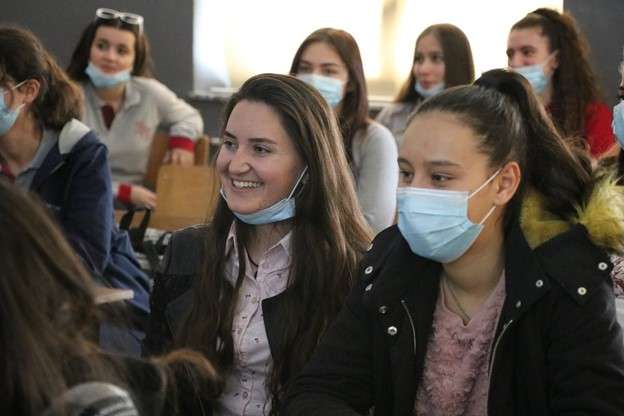
According to the UN our current global youth boom represents one third of our global population, of which 90% live in developing countries. Our youth represent promise. It is our responsibility to provide a promise in return of opportunity, development, and empowerment. A market systems approach to investing in youth focuses on sustainable interventions that incentivize dialogue with the private sector to help fulfill that promise.
Currently, Kosovo is home to Europe’s youngest population with nearly half of its 2 million people under the age of 25 and a poverty rate hovering at about 30% of the total population. We recognize that building a resilient path of development and out of poverty entails the involvement and empowerment of youth.
There are many benefits to involving youth in their country’s development. Motivated youth can act as change agents, and when given necessary skills, resources, and opportunities can contribute to economic growth for their country.
The market systems approach seeks to modify the behavior of market players by impressing the private sector with the value of youth involvement and early intervention. Increasing the economic competitiveness of a country coupled with focused action on job opportunities for youth is a win-win development strategy.
Under USAID’s Kosovo Compete Activity, DT Global uses a market systems approach to promote sustainable market competitiveness while closing the gap between youth and the private sector through linking vocational education and training institutions directly to businesses.
“Sharing real life experiences and success stories with youth is a very important step towards empowering youth and inspiring them to explore their interests and potential,” noted USAID Kosovo Compete Activity Chief of Party, Skender Rama.
Our team is focusing on three key export-oriented sectors: ICT, wood-processing, and food processing and teaming up with 12 high schools across the country to expose students to potential careers in these fields most likely for the first time. The program’s initial visits are designed to provoke interest and provide students with industry-specific career pathways.
The activity brings the private sector into direct dialogue with youth. Our team has strategically invited companies based in or around the towns and cities these high schools are located in, thus making the potential opportunities much more tangible and realistic for the students. This exercise provides not just powerful, but relatable success stories from entrepreneurs and business leaders they may be familiar with along with valuable career information. In Gjakova, over 40 students including 21 girls attended one of these sessions.

“The presentations on the food processing, wood processing and ICT sectors were interesting and valuable for us. For example, I learned that if we engage in the ICT sector, we would have so many options for career advancement, and we can work from here for companies not just in Europe but around the world. We should have more of these information sessions and presentations for students throughout Kosovo and also opportunities for internships as they would help start our careers,” says Hamide Livoreka, a student from Dardania High School in Elez Han.
Students are learning about average salaries in these sectors, what they need to study, the type of work they could perform, and hearing from entrepreneurs about the challenges and rewards that can lead to their success. This activity is facilitating the connections between students and potential employers and the possibility of internships for some of the students with the companies that are presenting at these schools.
Separately, the USAID Kosovo Compete project also builds the capacity of independent vocational education training (VET) centers and universities to educate and train students without external support in the future. The VET centers and universities are encouraged to expand their offerings; train more students through grants and other technical assistance (especially encouraging the participation of women and youth); and promote career opportunities, internships, and knowledge sharing with direct involvement with the private sector. These coordinated steps provide the means for sustainable development as part of a concerted effort to improve the productivity and competitiveness of the overall economy.